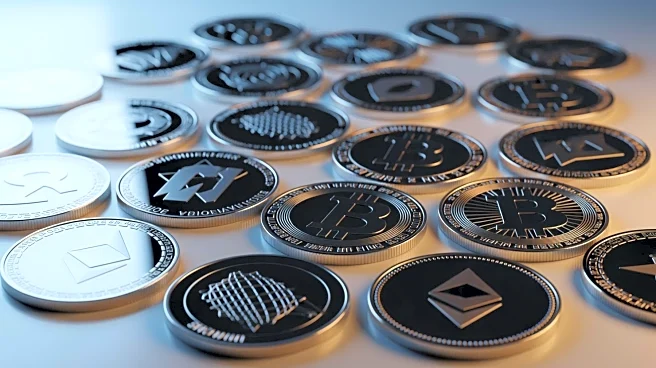What's Happening?
The cryptocurrency market is experiencing a shift from panic selling to selective accumulation following a sharp downturn in 2024. Investors are now focusing on which established layer-1 cryptocurrencies
will recover fastest and which new projects will attract fresh capital. Among the new coins gaining attention are Pepenode, Ethereum, Chainlink, and Uniswap. Pepenode is noted for its micro-engagements that encourage organic retention, while Ethereum continues to be a reliable settlement hub. Chainlink is expanding its data pipes for smart contracts, and Uniswap remains a key player in decentralized liquidity. The global crypto market cap is nearing $4 trillion, with the Fear & Greed Index at a neutral 40, indicating a calmer sentiment that supports fresh flows into smaller projects.
Why It's Important?
This development is significant as it highlights a potential recovery in the cryptocurrency market, which could impact various stakeholders including investors, developers, and financial institutions. The renewed interest in new and established cryptocurrencies suggests a shift in market dynamics, where selective accumulation may lead to increased stability and growth. Ethereum's continued role as a settlement hub and Chainlink's expansion of data pipes are crucial for the infrastructure of decentralized finance (DeFi) and Web3 technologies. Uniswap's consistent routing quality and competitive slippage are important for maintaining decentralized liquidity. These factors collectively indicate a maturing market that could attract more institutional investment and innovation.
What's Next?
As the market stabilizes, investors and developers are likely to continue monitoring the performance of these cryptocurrencies. The ongoing rollout of UniswapX and potential integration with layer-2 scaling could further enhance decentralized liquidity. Ethereum's roadmap toward scalability through proto-danksharding and layer-2 rollups may strengthen its position as a default smart contract engine. Chainlink's adoption of the Cross-Chain Interoperability Protocol (CCIP) could expand its role in inter-chain communication. These developments may lead to increased institutional adoption and further integration of blockchain technologies into global finance.
Beyond the Headlines
The shift from panic selling to selective accumulation in the cryptocurrency market may indicate a long-term trend towards stability and maturity. This could lead to a more sustainable growth model for the industry, reducing the volatility that has characterized the market in the past. The focus on infrastructure and reliable performance over hype suggests a move towards practical applications of blockchain technology, which could have broader implications for sectors such as finance, supply chain management, and digital identity.












